|
Ever since reading Thoreau as a child, and his arguments against spending our time working to buy things we don't always need I've been interested in work, time and finding your own 'enough'. As a result it was a pleasure to talk with Samuel Alexander, founder of the Simplicity Institute about the how our conceptions and experiences of time play a role in moving towards less consumption based lifestyles. We talk here about everyday time use, but also ideas of progress, success and revaluing time.
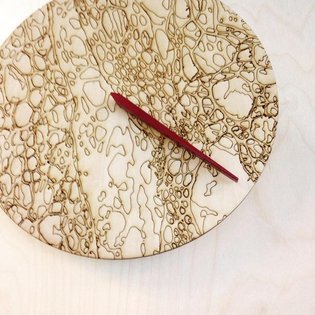 Circadian clock by Anaïs Moisey Circadian clock by Anaïs Moisey With the finalisation of a new paper “Liberating Clocks: Developing a critical horology to rethink the potential of clock time”, which will be coming out in a special issue of new formations on the topic of “Timing Transformations”, I wanted to reflect a little on the idea of a ‘critical horology’. Partly to ask why no such area of practice and research has yet been developed. Unlike its more famous and well established cousin, critical cartography, there seems to have been no move to pull horology – “the art or science of measuring time; the construction of horologes” (OED) – into more critical frameworks. In their overview of critical cartography, Crampton and Krygier argue that it “challenges academic cartography by linking geographic knowledge with power, and thus is political” (11). They also offer two reasons why cartography has opened up to more experimentation and redesign. The first is that mapmaking is no longer only in the hands of the experts. And secondly “a more social theoretic critique, which we argue is a political one, situates maps within specific relations of power and not as neutral scientific documents” (12). Importantly critiques of maps and their roles in these power relations has not weakened map making, but has allowed others to “make competing and equally powerful claims” (12). They therefore conclude that “this one-two punch–a pervasive set of imaginative mapping practices and a critique highlighting the politics of mapping–has undisciplined cartography” (12). Looking for this one-two punch in relation to horology, turns up very little however. Firstly, while cartography has expanded to include methods for crowd mapping, participatory GIS and community mapping (for example), descriptions of the role of a horologist and the kind of training they might receive, focus specifically on the technical expertise gained and the ability to make and repair objects that measure time in a relatively neutral way. This training is by and large undertaken outside of the university, and one wonders what improved conversations with arts, humanities and social science researchers may have in opening up established technical practices (as Crampton and Krygier claimed for cartography see p 12). In many ways, then, clock-making remains in the hands of the experts. Secondly, as I argue in my paper, in a range of core areas of social theory, clock time remains under-theorised and fundamentally misunderstood. Continental philosophers, for example, continue to regularly equate clock time with an ‘objective time’ or ‘universal time’. Indeed rather than turning towards the clock to develop more critical approaches, the tendency for phenomenologically inspired philosophers is to use the clock as a referent for the kind of time they don’t want to talk about. As a result, the clocks seems to have become practically irredeemable as a tool of critique, or political transformation. This is a significant problem because it means that philosophers have willingly absented themselves from debates about the crucial role that clocks, and the time they tell, play in everyday life. All is not as dire as this though, with scholars in other disciplines pointing to the contingent and historical nature of what we now call ‘clock-time’, and showing that there are multiple possibilities for measuring time and ‘constructing horologes’ otherwise. Here I’m thinking particularly of anthropologist Kevin Birth, with his approach being pithily summed up in the following quote: “Every clock tells a story. Every clock takes a position in a debate about time. Every clock is an attempt to shape how people think about time” (Birth, 2013). In addition, while there is not yet a form of ‘community clocking’, as my tumblr shows artists, activists, designers and others have indeed been creating clocks that tell competing stories. Here we might take further inspiration from Denis Wood who argues that “Map artists...claim the power of the map to achieve ends other than the social reproduction of the status quo. Map artists do not reject maps. They reject the authority claimed by normative maps uniquely to portray reality as it is, that is, with dispassion and objectivity” (quoted in Crampton and Krygier, 25). Likewise these ‘clock artists’ or temporal designers, reject the normative clock as the unique portrayal of the reality of time. We have not yet got to the position, however, that Crampton and Krygier describe, where “the ability to make a map, even a stunning interactive 3D map, is now available to anyone with a home computer and an internet connection” (12). Indeed perhaps the most prominent story of a hobbyist making their own clock, involved a child’s arrest. A critical horology could thus have much to learn from critical cartography, including encouraging conversations between clock makers and theorists, and encouraging wider access to the construction of clocks. As Crampton and Krygier argue, “a critique is not a project of finding fault, but an examination of the assumptions of a field of knowledge” (13). Thus a critical horology is not so much a challenging of horologists, as an effort to support broader questioning of the underlying assumptions about what a clock is, what kind of time it can tell and what it brings into relationships. To show “how they came to be, and what other possibilities there are” (ibid 13). You can read the preprint version of “Liberating Clocks: Developing a critical horology to rethink the potential of clock time” here. References: Birth, Kevin K. 2013. "Clocks, Politics, and Changing Times." Precision and Splendour Exhibition Lecture Series, Frick Collection, New York, 16th October 2013. Crampton, Jeremy W., and John Krygier. 2005. "An Introduction to Critical Cartography." ACME: An International E-Journal for Critical Geographies 4 (1):11-33.
Last week I attended a workshop at Birkbeck called The Chronic: Temporality, Care and Health. It was organised by Dr. Shaul Bar-Haim and Dr. Gill Partington as part of the larger Waiting Times research project. In the blurb for the event they describe chronic time as: complex and contradictory: For the sufferer it may entail states of on-going crisis and emergency, but simultaneously a stilled, arrested and even recursive time. There may be cycles of remission and relapse, uncertain prognosis, waiting for treatment, and simply waiting to see. ‘Time hangs heavy, yet there is so little of it’ as the dying cancer patient in Margaret Edson’s play, Wit, states. Chronic time may be simultaneously urgent and slow, both terminal and interminable. I presented on a panel with Victoria Browne and Martin O'Brien where we suggested what the broader political implications of the chronic might be. I thought I'd share my own contribution, which links the chronic to environmental discourses that talk about climate health. Any feedback on these preliminary ideas would be very welcome. Climate Change as Chronic Condition?
In thinking about this presentation, I wanted to try and get a better sense of what it was to live the time of a chronic condition. And so my partner graciously shared his experiences of having Type 1 Diabetes since he was 11 years old. He first talked about the rigidity of time when he was growing up. Having to eat and inject at the same times every day. But he also talked about the experience of being diagnosed itself. He said that in those first few hours of being told there was already a sense of things ending. Often when you are ill you are told how you are going to get better, you enter the temporality of recovery, which can also be very hard, but it has a different kind of arc to it, the diagnosis is a beginning of getting better and eventually getting back to normal. For my partner, though, the diagnosis of diabetes meant that there wasn’t this trajectory in front of him. He couldn’t reverse it, he couldn’t fix it, he couldn’t do anything about it. This was what he was going to be until he died. It even felt, at age 11, that he could already read the last page of his book. He knew he’d have diabetes when he died, he’d still be doing injections on his death bed. So I was thinking what I might offer today about this sense of 'the chronic', what suggestion I might make about how it might travel in different ways or what it might offer to other domains. And what I want to suggest is that it might be helpful when thought in relation to climate change and environmental crisis. Within environmental thought, the health metaphor has been a persistent one, even while it has also been strongly critiqued. There is the classic phrase from Rowe, for example, that “the Earth is running a fever, and we are the virus.” James Lovelock, in his work on the Gaia theory has talked about the need to develop a “planetary medicine”, while Aldo Leopard talked about "land health" and "land doctoring". Critiques of the use of the metaphor include those of ecologists who argue that it is an “invalid analogy with human health requiring acceptance of an optimum condition and homeostatic processes” (Wicklum & Davies 1995). Basically it misunderstands how ecosystems work and idealises states of equilibrium. Even so, others within ecosystem services have persisted in talking about the health of ecosystems (eg Rappaport et al. 1998) and some environmental philosophers have argued that the metaphor focuses attention on the intrinsic values of environments since health is generally valued in and of itself (eg Callicott 1992). But in all the talk of land doctoring and planetary medicine the kinds of conditions that are pressed into use as metaphor seem to be acute ones rather than chronic conditions. Fevers, viruses, parasitic infections, are all seemingly amenable to action. The aim is to cure, to recover, to repair. Of course some viruses and infections can be chronic, but from my initial look into the area, this is not how the problem is conceptualised. Here I’m interested in how the time of recovery and the time of the chronic are linked to ideas of agency in different ways. As some of you will probably know, I’ve long been fascinated by anthropologist Carol Greenhouse’s contention that concepts of time can also be read as theories of agency. That is, our ideas of time carry with them assumptions about how change happens, what counts as a change and who can make changes. In the time of recovery for example, there is a sense of being able to transform the patient from the sick to the well. This is done in part by the knowledge of the doctor and the efforts of the patient. There is an arc of moving from pain and suffering towards health and recovery. In many discussions around the health of the planet and ecosystem health, this sense of agency - of the possibility of recovery if there is the right diagnosis from the experts and the right efforts from everyone else - is dominant. Many are hoping that the condition is an acute one. But what if the changes in the environmental are chronic rather than acute. What if, we receive a diagnosis which tells us that things can’t be reversed and can’t simply be fixed. What if we are facing a future where a significantly altered environment would be with us from now on and through the passing of many future generations. We’d never have an end to managing the condition, never be able to have a time when we 'went back to normal.' Here I’m thinking, for example, of recent research on the West Antarctic ice shelves, which suggests that we are now locked into a 1.2 meter sea level rise. The warmer sea waters are cutting up under the ice and quickly advancing back up on land because the land the ice is resting on is below sea level. This is thought to be a process that now cannot be reversed. So, I suppose what I want to suggest is that developing thinking around the way chronic time works and how it is experienced seems to me at least to, potentially, be incredibly useful for understanding the relationships between time, agency and environmental change. It might, for example, encourage us to see the significance of what is going on in very different terms and to adopt a different set of coping mechanisms.
What is common to all of them the assumption that it’s ok to ask someone to squeeze something more in. We ignore the illnesses, the anxiety, the overwork and ask for ‘just a little bit more.’ I have the feeling that this is something that many people will be familiar with. It’s something that happens to us and something many of us do to other people.
Perhaps one reason we do this is that we get so caught up in our own deadlines and worries that we can’t accept that what we had planned just isn’t going to happen. The report you really hoped to have in the newsletter won’t be getting written. The attendees at your event won’t be synchronised with each other. Once, when a speaker had to cancel their attendance at a meeting I’d organised, I didn’t get back to them for a week because I was too busy worrying about what I was going to do without them. In my own work I’ve come to think about time as a form of relationality. Our stories about time tell us what is it to be with others, or to not be with them. They also tell us what kinds of forms this ‘withness’ can take. This means that time can also be seen as a form of ethical encounter. If that’s so, what are we doing when we ignore other people’s claims that they don’t have the time? It seems that in order to treat the other ethically, you have to come to terms with your disappointment, let go of the anticipated future you had been working with, and then still have the generosity to be able to say to the person who has somehow let you down “Of course, no problems, hope things get better for you soon”. I had a lovely lesson in this when I witnessed a colleague deal with a keynote having to drop out of an event only a couple of weeks before the start date. The speaker had obviously wrestled with the guilt of doing this and was extremely apologetic. Almost immediately the reply came back that they would be missed, but it is far more important for them to take care of themselves, everyone would manage, and there was no need to feel bad. Even though it wasn’t directed to me, the kindness and compassion of it brought me to tears. I had this in mind when I was sitting in that network coordination meeting, listening to stressed people being asked to take on even more. I realised that sending them the email passwords ‘just in case’ would still add another thing to the pile of things they felt like they should be doing. So I objected and suggested that they should in fact be deliberately not sent the password so they wouldn’t have it at the backs of their minds. It was only a tiny little gesture, but it’s an event that stays with me because it reminds me that there are these kinds of ethical decisions to be made, and I hope I can learn to be more like my colleague, who focused on care rather than guilt. Proposals due 18th January 2016. Unexpected Encounters with Deep Time: Violence Read more over at the Edinburgh Environmental Humanities site.
Unexpected Encounters with Deep Time: Enchantment
Thursday, 26th November 2015 Andrew Grant Lecture Theatre, Evolution House, West Port, Edinburgh College of Art Organised by the Edinburgh Environmental Humanities Network Earlier this year the discovery of homo naledi propelled enchantment into a framework of deep time. The speculation is that early human ancestors, perhaps from as much as 4 million years ago, may have ritually buried their dead in the dark Rising Star caves. The questions of when, where and for whom the world first appeared as enchanted have abruptly shifted from the 200,000 or so years of homo sapiens into a much longer past. Elsewhere, the deep future of enchantment can be gleaned from discussions around the future of nuclear waste. Will future descendants still be enchanted by this ‘new immortal’? If so how do present humans protect them from their own curiosity when conventions of communication are so closely embedded within shallow time? Looking closely at the implications of these questions reveal cracks in the shell of human exceptionalism. After all the questions around nuclear waste are often accompanied by the caveat that these descendants we seek to protect may no longer be human. Yet enchantment is a concept tied to the core of the humanities. Stories of the loss of disenchantment remain central to definitions of modernity and the rise of secularism, and enchantment’s return, via claims of the rise of religious fundamentalism, is central to contemporary geopolitics. Within environmental literatures enchantment has been seen as a way of mobilising ethical responses on an increasingly damaged planet (e.g. Abram; Bennet) and critiqued for contributing to the forgetting of countless ‘unloved others’ (Rose & van Dooren). Our series focus on ‘unexpected encounters with deep time’ emphasises the way that deep time is encountered in materiality of the everyday. Likewise Jane Bennet has stressed that enchantment arises, unanticipated, in the moment, in the “active engagement with objects of sensuous experience” (5). The aim of this workshop is to explore what enchantment might become within a framework of deep time. We hope to explore questions such as:
Contact: Michelle Bastian (michelle.bastian@ed.ac.uk) and David Farrier (David.Farrier@ed.ac.uk) Tamara DiMattina is a social entrepreneur who has been involved in a number of sustainability projects focusing on reducing consumption. We were intrigued by her project 'Buy Nothing New Month' with its clear objective of using time as a basis for reforming our relationship with 'stuff' and so conducted this interview with her about the project. We talk about time, fashion, creativity and whether or not sourcing things second hand might actually give you more time.
I'm pleased to announce a second event in the Temporal Design series that we’ve been developing here in Edinburgh. This will be a small workshop format, but all welcome. Further information and the link to register is below. Temporal Design: Surfacing Everyday Tactics of TimeThe second in the series of Temporal Design events hosted by Design Informatics (ECA) will focus on the tactics used to negotiate time in everyday life. We are particularly interested in asking how design might support or hinder what we are calling ‘vernacular temporalities’. That is, the idiosyncratic modes of dealing with and understanding time that are locally constructed in response to specific contexts and which may not fit the more regulatory infrastructures that dominate thinking about time.
Vernacular temporalities are those that are produced through day-to-day negotiation with the people, places, objects we encounter. They involve practices that shape how we perceive and manage time. We act and react, we organise and negotiate, stretch and compact time, but we also predict, reminisce, and fantasise about other times. Although these practices play an important role in shaping temporality, they are often enacted in an unreflective way, rarely noted or discussed. Indeed in our first workshop, many participants suggested that it had been the first time they had even articulated the daily practices they had developed to deal with temporal demands. The aim of this workshop, then, is to surface the role of these temporal practices and their effect on broader social contexts, discussing how artefacts and systems may work as triggers, projections, facilitators or obstructions to these practices. The workshop will feature four speakers from design and design theory, whose work touches on different aspects of temporality. They will each highlight a specific artefact, and there will be the opportunities for attendees to participate in reflecting on these talks and/or selected objects throughout the event. The workshop is free and open to all disciplines. When: 28th September 2015, 11am - 4pm Where: Talbot Rice Gallery, The University of Edinburgh, Old College, South Bridge, Edinburgh, EH8 9YL To register for the workshop go to: www.eventbrite.com/e/temporal-design-workshop-tickets-17918054383 For more information contact: larissa@entretags.de Organised by Larissa Pschetz, Jane Macdonald, Chris Speed and Michelle Bastian, Design Informatics, University of Edinburgh. |
Archives
November 2022
Categories
All
|
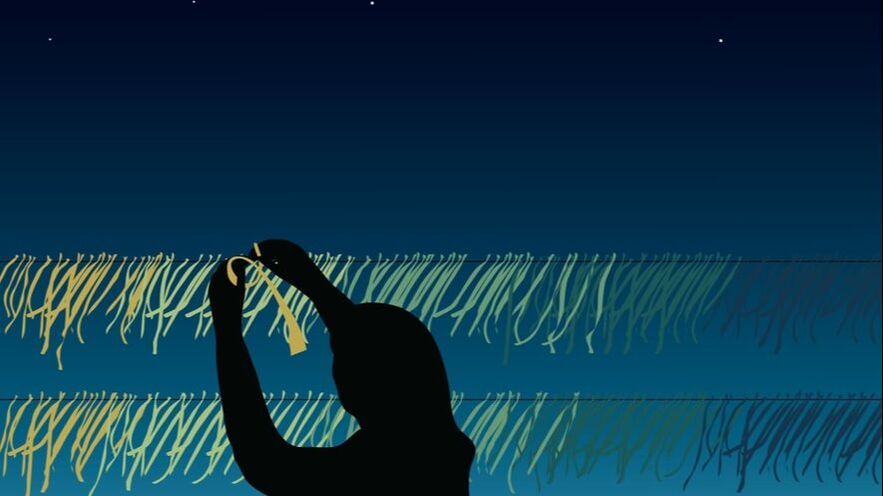
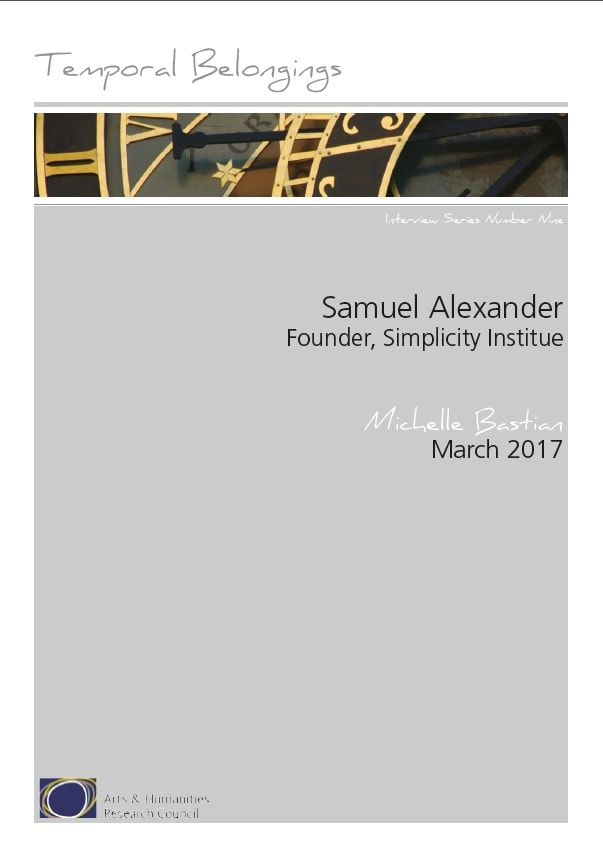
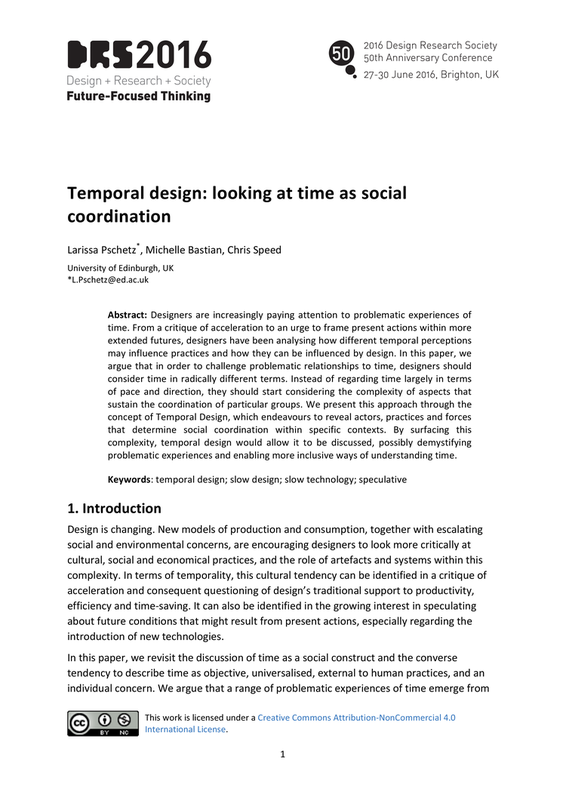

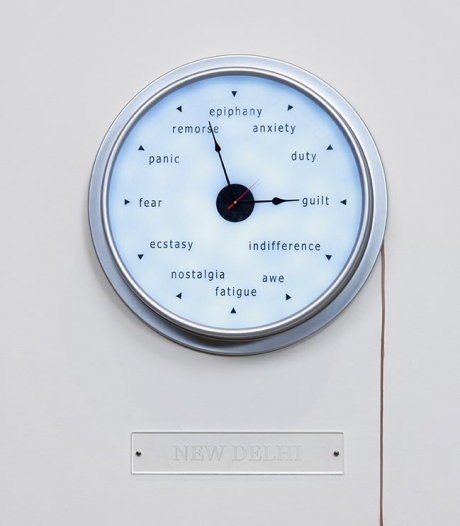
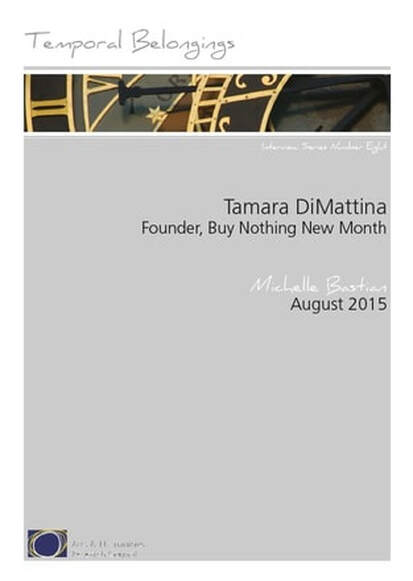
 RSS Feed
RSS Feed
